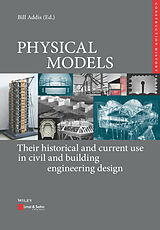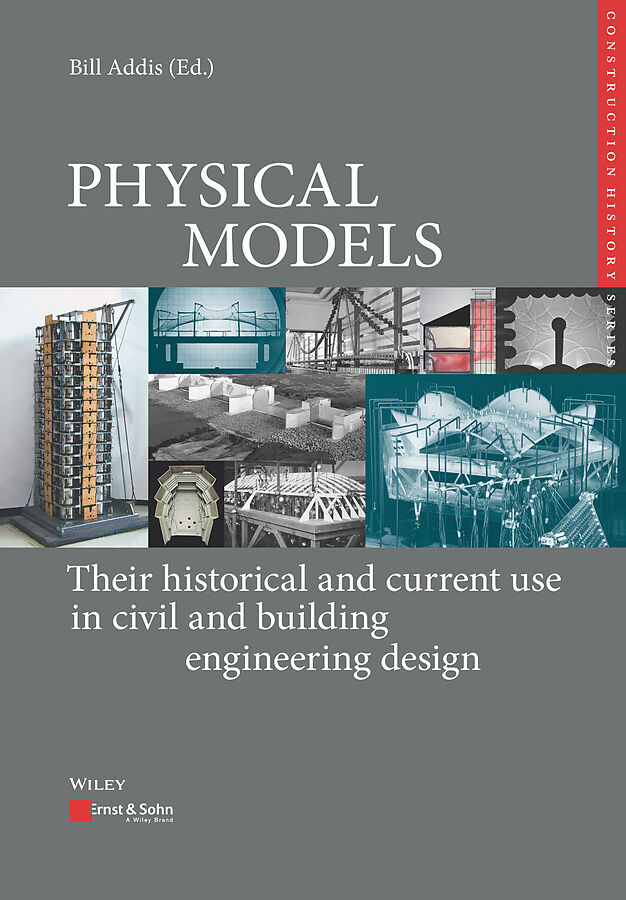PHYSICAL MODELS: Their historical and current use in civil and building engineering design
Einband:
Fester Einband
EAN:
9783433032572
Untertitel:
Their historical and current use in civil and building engineering design
Genre:
Baum- und Umwelttechnik
Herausgeber:
Wiley-VCH
Auflage:
1. Auflage
Anzahl Seiten:
1114
Erscheinungsdatum:
09.09.2020
ISBN:
978-3-433-03257-2
Physical models have been, and continue to be used by engineers when faced with unprecedented challenges, when engineering science has been inadequate or even non-existent, and in any other situation when engineers have needed to raise their confidence in a design proposal to a sufficient level in order to begin construction. For this reason, models have mostly been used by designers and constructors of highly innovative projects, when previous experience has not been available. The book covers the history of using physical models in the design and development of civil and building engineering projects including Robert Stephenson?s Britannia Bridge in the 1840s, the masonry Aswan Dam in the 1890s and the Boulder Dam in the 1930s; tidal flow in estuaries and wind and seismic loads on structures from the 1890s, the acoustics of concert halls and the design of thin concrete shell roofs from the 1920s, and the dynamic behaviour of tall buildings from the 1930s, as well as and cable-net and membrane structures in the 1960s. Individual designers featured include Eduardo Torroja, Pier Luigi Nervi, Heinz Hossdorf, Heinz Isler, Frei Otto, Sergio Musmeci and Mamoru Kawaguchi. The book concludes with overviews of the current use of physical models alongside computer models, for example in boundary layer wind tunnels, seismic engineering, hydrology, soil mechanics, and air flow in buildings. Traditionally, progress in engineering has been attributed to the creation and use of engineering science, the understanding of materials properties and the development of new construction methods. The book argues that the use of reduced-scale models has played an equally important part in the development of civil and building engineering. However, like the history of engineering design itself, this crucial contribution has not been widely reported or celebrated. The book includes 39 chapters written by 29 authors from ten different countries.
Autorentext
Bill Addis (born in 1949), the author of several chapters in the book, and overall Editor, studied engineering sciences and philosophy at the University of Cambridge before working as an engineer in the aerospace industry. He later spent over 15 years in the Department of Construction Management at the University of Reading, and then 15 years as a consulting engineering with the firm Buro Happold in London. He developed his interest in building and civil engineering history, and in the use of model testing during five decades, including work on his doctorate on the history and philosophy of engineering. He has written several books and over a hundred academic papers on the history of building engineering and construction, and has recently been enjoying lecturing and research as a visiting professor in universities in Rome, Innsbruck, San Sebastian, Zurich, Brussels and Munich. He worked for more than 15 years in the academic world, as well as over 15 years with an international firm of consulting engineers.
Inhalt
Preface Construction History Series (by Karl-Eugen Kurrer) Foreword (by Werner Sobek) Introduction (by Bill Addis) SECTION A - PHYSICAL MODELS FROM ANCIENT TIMES TO THE 1880s 1 Dirk Bühler: Models in civil engineering from ancient times to the Industrial Revolution 2 Santiago Huerta: Block models of the masonry arch and vault 3 Rainer Graefe: The catenary and the line of thrust as a means for shaping arches and vaults 4 Andreas Kahlow: Leonhard Euler and the model tests for a 300 metre timber arched bridge in St. Petersburg 5 Dennis Smith: The use of models in early nineteenth-century British suspension bridge design 6 Bill Addis: Models used during the design of the Conwy and Britannia tubular bridges SECTION B - PHYSICAL MODELS USED IN STRUCTURAL DESIGN, 1890s-1930s 7 Mike Chrimes: The use of models to inform the structural design of dams, 1890-1940 8 Bill Addis: Models used during the design of the Boulder Dam 9 Roland May: The role of models in the early development of Zeiss-Dywidag shells 10 Mario Chiorino & Gabriele Neri: Model testing of structures in pre-war Italy; the School of Arturo Danusso 11 Joaquin Antuna: Eduardo Torroja and his use of models up to 1936 12 Bill Addis: Photoelastic stress analysis SECTION C - PHYSICAL MODELS USED IN STRUCTURAL DESIGN, 1940s TO 1980s 13 Bernard Espion: Structural modelling technique 14 Christiane Weber: Physical modelling at the University of Stuttgart 15 Mario Chiorino & Gabriele Neri: Model testing of structures in post-war Italy: the activity of ISMES 1951-1974 16 Joaquin Antuna: Eduardo Torroja and his use of models from 1939 17 Edwin Trout: Scale models for structural testing at the Cement and Concrete Association, UK: 1951-73 18 Pepa Casinello: Heinz Hossdorf: his contribution to the development of physical model testing 19 Berthold Burkhardt: Soap film and soap bubble models 20 Lukas Ingold: The model as an ideal building: the origins of the design methods of Sergio Musmeci 21 John Chilton: Heinz Isler and his use of physical models 22 Ian Liddell: Models for the design development, engineering and construction of the Multihalle for the 1975 Bundesgartenschau in Mannheim SECTION D - PHYSICAL MODELS USED IN NON-STRUCTURAL ENGINEERING DISCIPLINES 23 Bill Addis: The historical use of physical model testing in free-surface hydraulic engineering 24 Bill Addis: The historical use of physical model testing in wind engineering 25 Bill Addis: The historical use of physical model testing in earthquake engineering 26 Raf Orlowski: The historical use of models in the acoustic design of buildings 27 Bill Craig: Geotechnical centrifuge models ? a history of their role in pre-construction design SECTION E - PHYSICAL MODELLING IN THE TWENTY-FIRST CENTURY 28 Mamoru Kawaguchi: Physical models as powerful weapons in structural design 29 Bruce Martin: Physical modelling of structures for contemporary building design 30 David Wendland: Using physical models in the design of complex masonry structures 31 James Sutherland: Physical modelling of free surface water - current practice 32 Francesco Dorigatti: Boundary-layer wind tunnel model testing - current practice 33 Amarnath Kasalanati: Model testing using shake tables - current practice 34 David White: Geotechnical centrifuge modelling - current practice 35 Raf Orlowski: The use of physical models in acoustic design - current practice 36 Owen Connick: Water-bath modelling - small-scale simulation of natural ventilation flows 37 Jan Knippers: The use of biological models for building engineering design 38 Mamoru Kawaguchi: Flying a 100 metre long Jumbo Koinobori 39 Dirk Bühler & Christiane Weber: Epilogue: A future for models from the past APPENDICES - Earliest writings in engineering literature about scaling and the use of reduced-scale models A1 Original source 15BC Vitruvius. A2 Original source 1638 Galileo. A3 Original source 1772 Leonard Euler. A4Original source 1801 Report on Telford's arch bridge across the Thames A5 Original source 1846 Short article on models in The Builder. A6 Original source 1847 Short article in Civil Engineer and Architects' Journal. A7 Original source 1887 part of paper by Osborne Reynolds. 100 word AUTHOR BIOGRAPHIES

Leider konnten wir für diesen Artikel keine Preise ermitteln ...
billigbuch.ch sucht jetzt für Sie die besten Angebote ...
Die aktuellen Verkaufspreise von 6 Onlineshops werden in Realtime abgefragt.
Sie können das gewünschte Produkt anschliessend direkt beim Anbieter Ihrer Wahl bestellen.
Loading...
Die aktuellen Verkaufspreise von 6 Onlineshops werden in Realtime abgefragt.
Sie können das gewünschte Produkt anschliessend direkt beim Anbieter Ihrer Wahl bestellen.
| # | Onlineshop | Preis CHF | Versand CHF | Total CHF | ||
|---|---|---|---|---|---|---|
| 1 | Seller | 0.00 | 0.00 | 0.00 |
